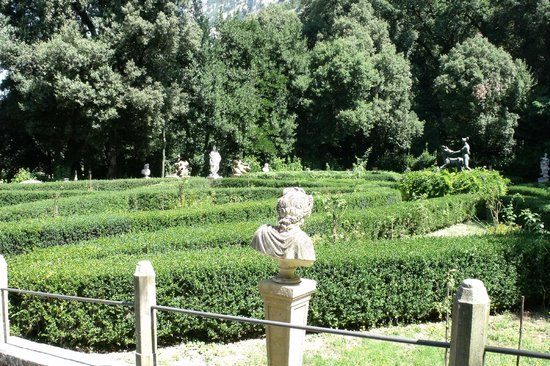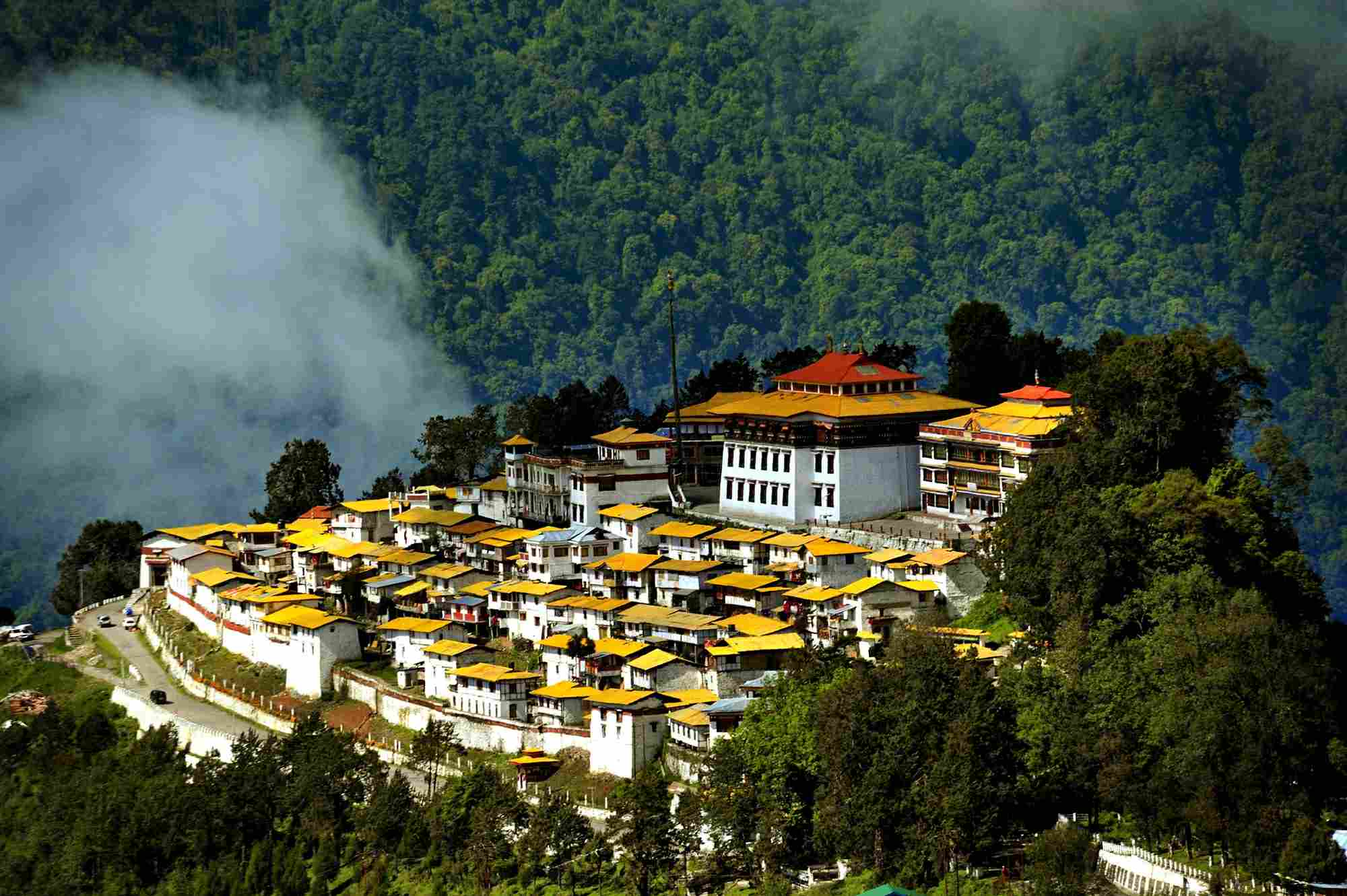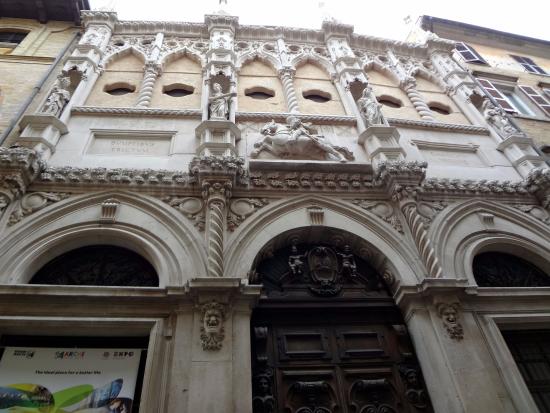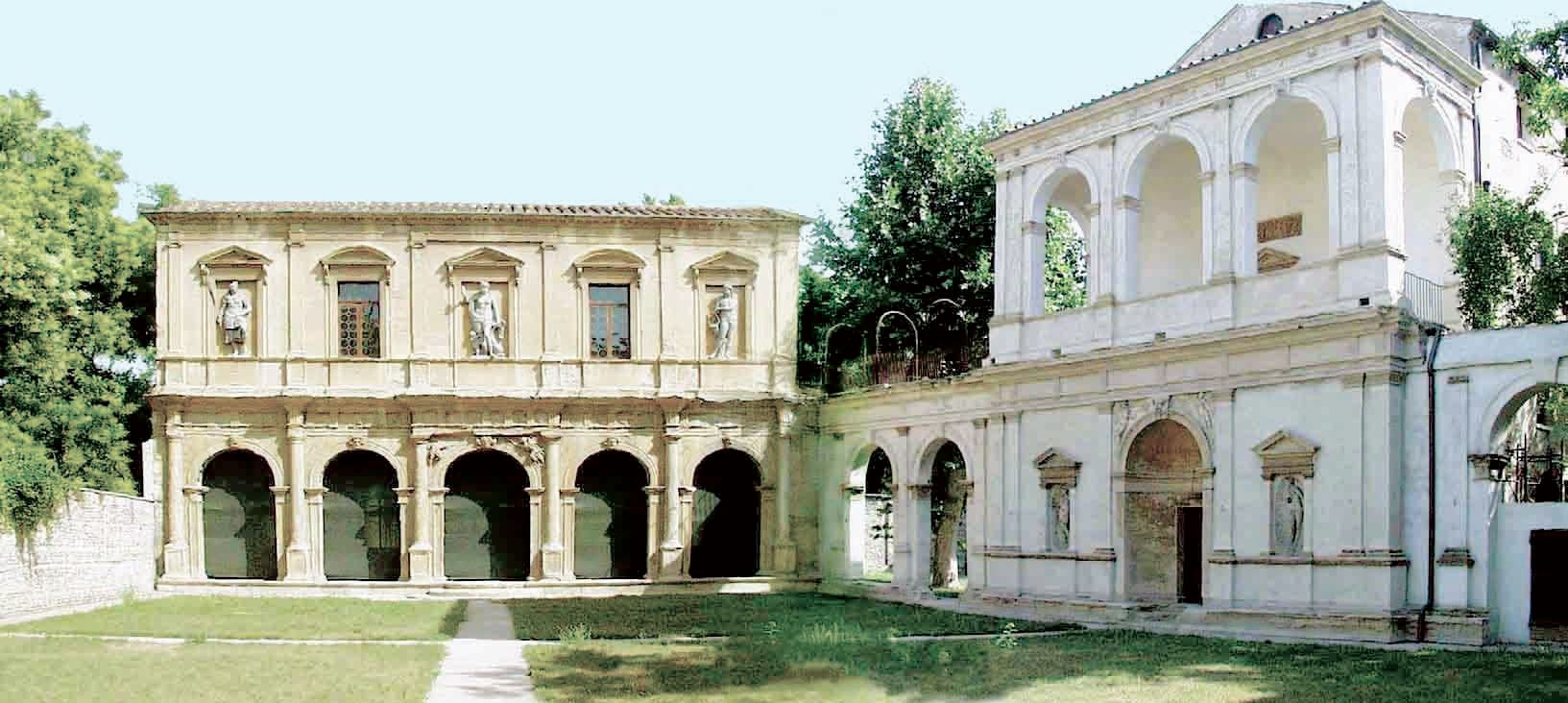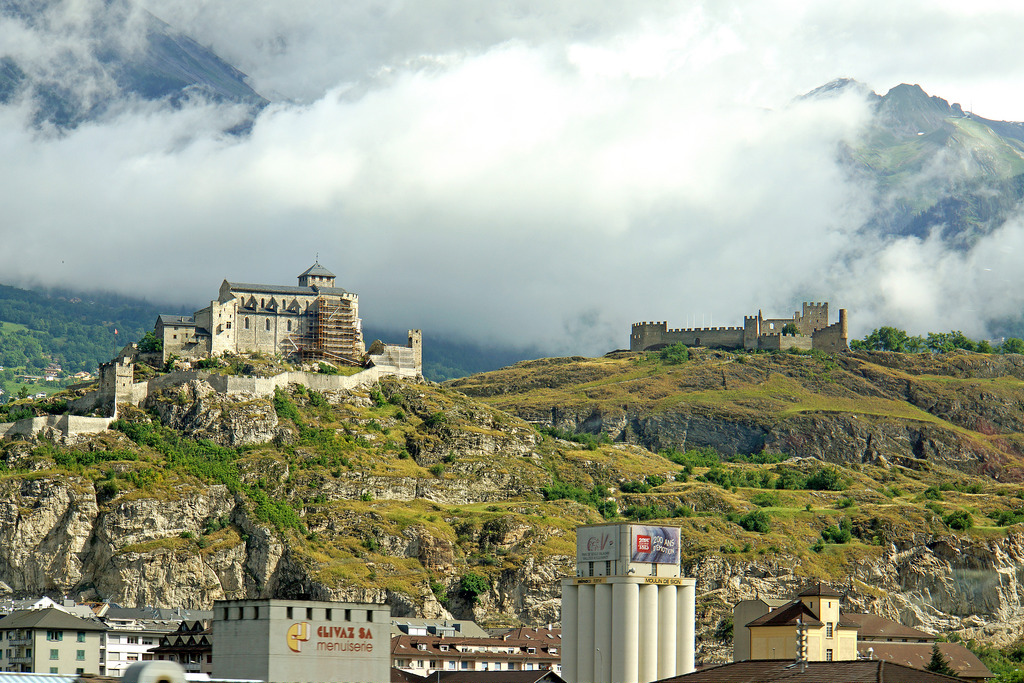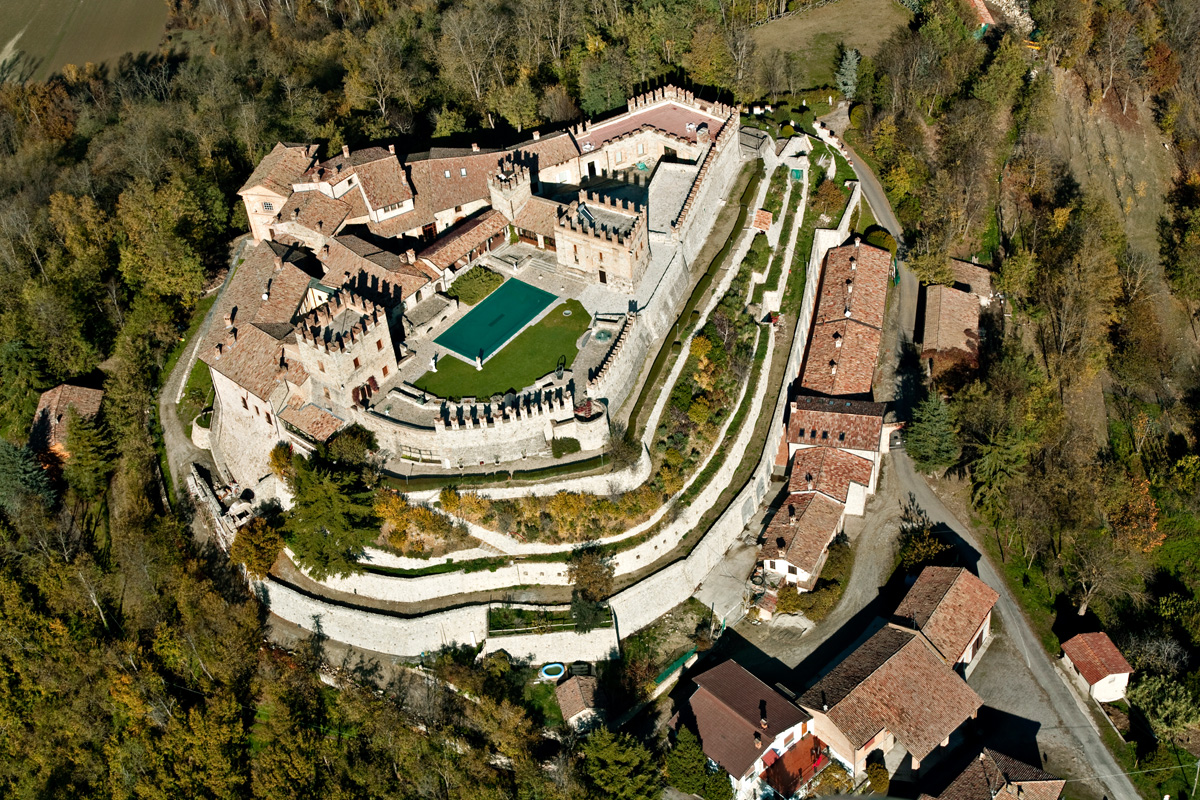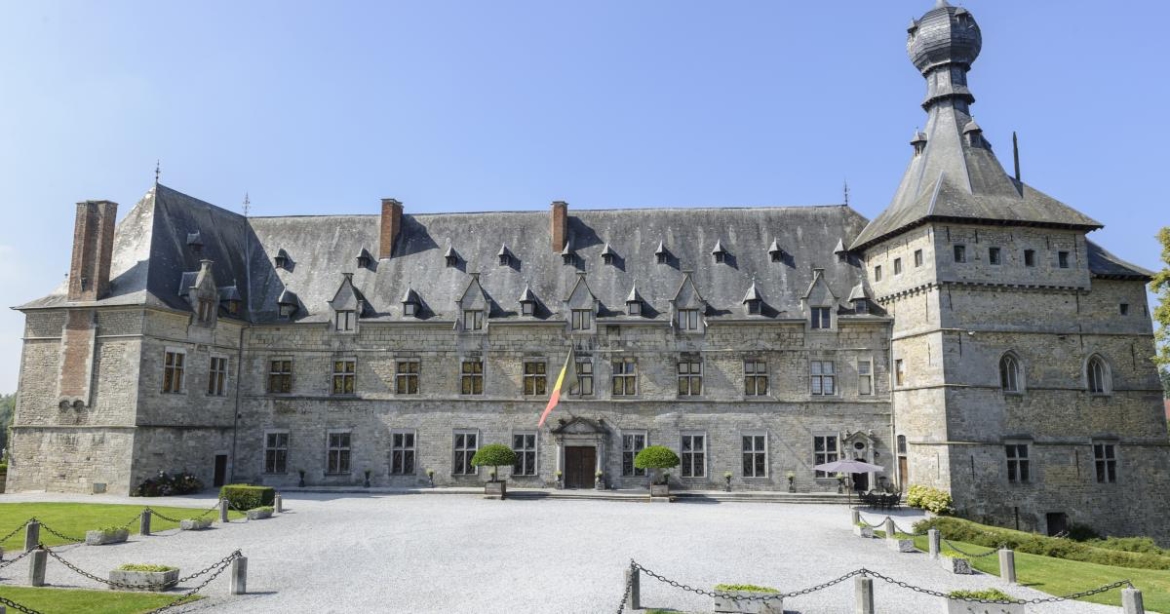The Villa covers about seventeen acres and is all walled in all around. It is entered from Calvary Square, through a wide iron gate carved into a crenellated tower of Norman style.Along the avenue that leads from the entrance of the calvary up to the castle, one encounters two large statues of heroes; the first, set in a majestic archway represents the Aetolian hero Meleager the second, depicts Hercules, who years ago following an act of vandalism was beheaded Beautiful are the gardens and for the variety of flowers and the duration of them along the course of the seasons. Awe-inspiring is an amphitheater made of boxwoods arranged in a park-like pattern from which sprout many marble spectators seated in their seats.In the center, at the top, is the box of honor where prominent figures sit Numerous and deep are the grottoes. In one of them, known as the "monsters," horrible-looking statues are noted, as well as Vulcan, beating red-hot iron on the anvil. In front of the portico that protects the entrance, there are five statues of very white marble depicting the arts: Music,Dance, Singing, Painting and Sculpture.
Curated with masterful artistry, the Villa expresses in its fantastic sculptural creatures, grottoes, fountains, and expertly pruned boxwood hedges, all the refinement of its creator: Marquis D. Giuseppe Maria Valva. This artistic legacy dates back to the late eighteenth century , but it was later, around 1867, that the Villa acquired greater splendor, by Marquis Francesco d’ Ayala-Valva.
The Villa is surrounded along its perimeter by walls of the ‘height of about three meters. The entrance to the park opens into a small tower with a neo-Gothic door closed by a gate and topped by Ghibelline battlements. On the right of the avenue is visible the Chapel of Our Lady of Filermo, where annually the Knights of Malta celebrate a commemorative mass. Next comes the "Coffee house," with a neo-Gothic portico of six arches adorned with the sculptures of the Pacchiane, representing women in Lucanian costume. At one time, opposite, one admired a "round pond with a castle in it having little towers at the four corners." At present the pond, described by the annalist De Meo, no longer exists, and in place of the castle one admires a fountain adorned with the figures of Diana and a bronze deer, while all around is the Italian garden, inhabited by the marble seasons of the year. At the end of the avenue a turret supports the purely marble statue of Hercules.
Every corner of the Villa is a mere surprise to the visitor. And so it is that along the way one is enchanted by the presence of a neoclassical amphitheater, made up of hedges pruned into boxes, where dozens of marble busts of men and women, silently wait for the show to begin from the empty stage. Still awe-inspiring is an underground walkway, culminating in a cave, where a statue of Vulcan beats red-hot iron on an anvil.
Here and there, as if hidden in the greenery, peep true sculptural masterpieces: fantastic stone creatures, gods, nymphs and cherubs. Arriving in a semicircular-shaped forecourt, one encounters the statues of the Muses, in front of which opens the door to the inner garden, enclosed by a wall, with avenues vaguely drawing a harp; in the center is a pool with human figures and fish. The area is crowned with dozens of marble busts. Two pathways lead to the castle portico with marble bas-reliefs by Donatello Gabrielli. Thus, magically embedded in the magnificence of the large park is its splendid Castle. It stands in the area of the old baronial palace. The complex, due to the Norman origin of the marquis’ house, reflects the architectural style of the time. It is all crenellated and at the northern point is adjacent to a large tower called a "blockhouse."
Hundred-year-old trees, many of them imported from different parts of the world and well acclimatized here, tall trees, botanical gardens with different floral patterns, and hedges pruned in geometric shapes make the landscape lush. Among the vastness and rarity of tree species, fountains -once with a thousand water features-, and pathways, valuable statues -disseminated with extreme good taste- stand out. Completing the overall picture are paths of laurel trees, tall plane trees, elm trees arranged in walls, and Italian and English gardens that make the place a true artistic labyrinth.
